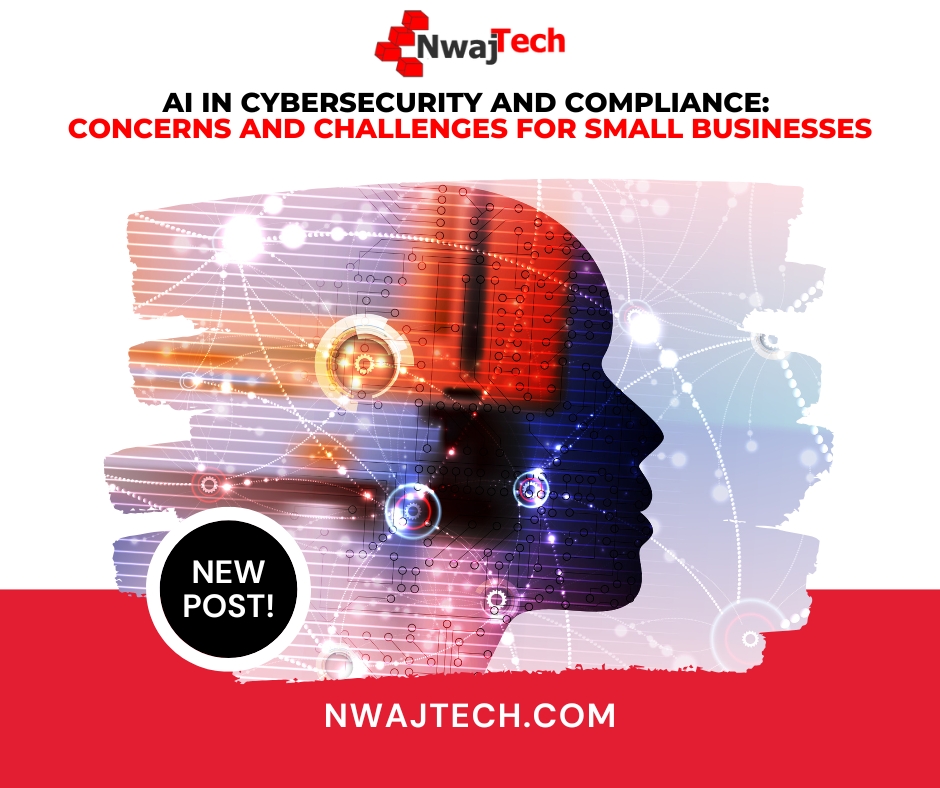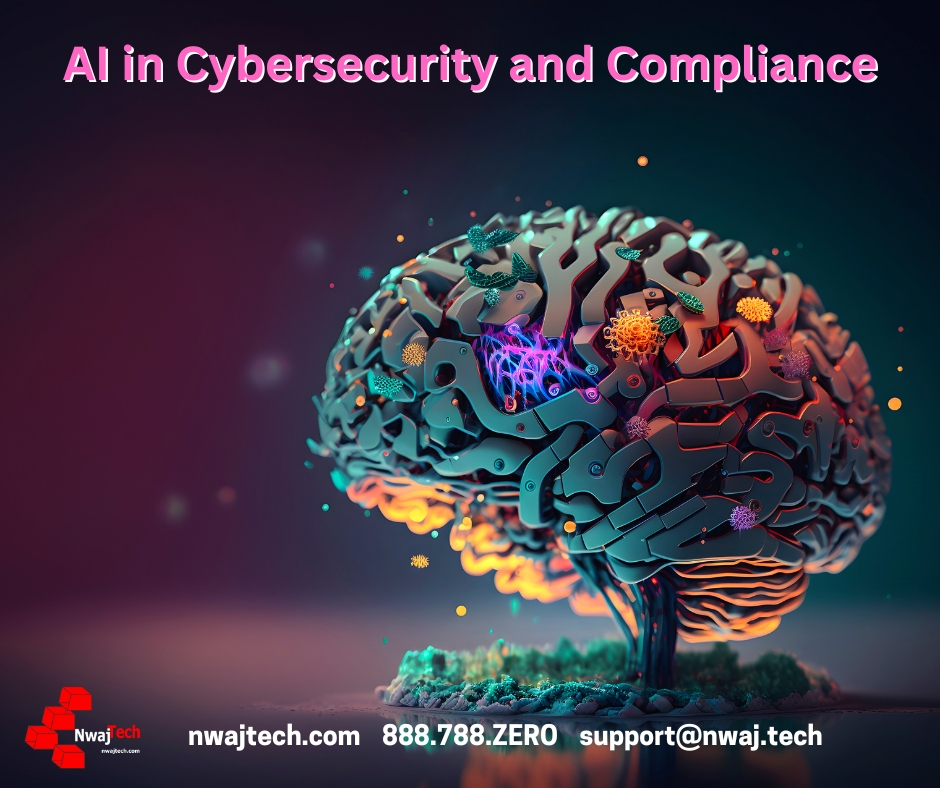
AI in Cybersecurity and Compliance: Concerns and Challenges for Small Businesses
Artificial Intelligence (AI) has taken center stage in cybersecurity and compliance, promising faster threat detection, more robust data protection, and streamlined regulatory processes. However, integrating AI-driven solutions can feel like a double-edged sword for small businesses. While AI holds immense potential to strengthen defenses and optimize compliance efforts, it raises concerns about cost, implementation complexity, and ever-evolving regulations. In this post, we’ll explore the main challenges small businesses face with the rapid emergence of AI tools in cybersecurity and compliance—and share ways to navigate them effectively.
1. Cost and Resource Constraints
The Challenge:
Although many AI-based cybersecurity solutions are growing on the market, many come with hefty price tags. Small businesses often operate on tight budgets, which limits their ability to procure cutting-edge tools. Even “affordable” solutions may require additional investment in IT infrastructure upgrades and specialized staff training, further driving up costs.
How to Address It:
- Look for Scalable Solutions: Seek out cybersecurity providers that offer tiered pricing models, allowing you to start with essential features and then scale up as needed.
- Optimize Infrastructure: Adopt cloud-based AI security tools, often requiring less upfront investment in hardware and ongoing maintenance.
- Leverage Open-Source Tools: While open-source platforms may lack some advanced features, they can still provide strong baseline protection and analytics for smaller operations.
2. Implementation Complexity and Skills Gap
The Challenge:
Deploying AI-driven solutions requires more than just purchasing software—it often involves setting up complex systems, managing data, and training staff to use these tools effectively. Small businesses may not have the in-house expertise to deploy, monitor, and maintain sophisticated AI platforms. Without proper oversight, these technologies can yield inaccurate results, false positives, or fail to adapt to new threats.
How to Address It:
- Invest in Training: Partner with local tech communities, online academies, or vendors to provide staff training in data management, cybersecurity best practices, and AI fundamentals.
- Outsource Strategically: If hiring a full-time AI specialist isn’t feasible, consider contracting with a managed service provider (MSP) to handle deployment, ongoing support, and threat monitoring.
- Start Small: Pilot a single, manageable AI-driven project or tool to gain experience and prove its value before rolling out a full suite of AI-based solutions.
3. Data Privacy and Protection
The Challenge:
AI systems thrive on data, collecting and analyzing vast information to identify threats or compliance gaps. However, small businesses must be cautious: storing and processing sensitive customer data in AI-driven tools can increase the risk of exposure in a breach. Moreover, companies face stringent regulations on how they handle customer data.
How to Address It:
- Adopt Privacy-by-Design: From the outset, ensure your AI systems and workflows incorporate privacy measures—like data minimization, encryption, and access controls.
- Conduct Regular Audits: Regularly evaluate how data is collected, processed, stored, and disposed of within AI systems, ensuring adherence to privacy laws such as GDPR or CCPA.
- Implement Strong Access Policies: Limit the number of employees who can access critical customer data and continuously monitor privileges for any unauthorized changes or suspicious activity.
 4. Regulatory and Compliance Complexity
4. Regulatory and Compliance Complexity
The Challenge:
With compliance demands rising—especially in fields like finance, healthcare, and e-commerce—small businesses must stay ahead of rapidly changing regulations. AI can help streamline the process by automating risk assessments, spotting compliance gaps, and generating documentation. However, using AI can create new compliance hurdles, such as explaining how AI-driven decisions are made or ensuring algorithms meet industry-specific standards.
How to Address It:
- Stay Informed: Monitor relevant regulatory updates and consult with compliance experts to ensure your AI deployments meet new guidelines.
- Emphasize Explainability: Seek out “explainable AI” solutions that provide clear insights into how decisions or risk scores are generated. This can prove invaluable during audits.
- Integrate Governance Tools: Deploy AI governance frameworks and compliance modules that automatically log key decisions, maintain records, and produce reports for regulatory bodies.
5. Ethical Concerns and Trust
The Challenge:
AI-powered tools in cybersecurity and compliance must be able to make decisions that affect data and customers, often in real-time. If these tools are not transparent or inadvertently introduce bias (for example, flagging certain transactions as fraudulent based on incomplete data), small businesses could harm customer trust and face legal repercussions.
How to Address It:
- Prioritize Ethical AI: Make sure any AI partner or vendor has clear documentation on ensuring fairness, accuracy, and responsible data use.
- Human Oversight: Combine automated decision-making with human review. When AI flags an anomaly or compliance issue, have a qualified staff member validate decisions to reduce false positives and build trust.
- Seek External Validation: Engage with third-party auditors or industry groups that can assess and certify the ethical handling of data.
6. Rapidly Evolving Threat Landscape
The Challenge:
Cybercriminals are also leveraging AI to launch more sophisticated attacks. They can automate phishing campaigns, weaponize deepfakes, and exploit zero-day vulnerabilities at scale. Already stretched thin, small businesses must keep pace with these evolving threats while juggling day-to-day operations.
How to Address It:
- Continuous Learning: AI tools must be updated with the latest threat intelligence. Opt for solutions that offer frequent or real-time updates.
- Multilayered Security: Don’t rely solely on AI. Combine AI-based tools with traditional security measures—like firewalls, intrusion detection systems, and staff training on phishing awareness—to create a well-rounded defense.
- Incident Response Plan: Develop and regularly test a rapid response protocol. In the event of an AI-detected breach, clear roles and responsibilities will help mitigate damage quickly.
Conclusion: Embracing AI Wisely
The surge in AI-powered cybersecurity and compliance solutions promises enormous benefits for small businesses, from proactive threat detection to automated regulatory checks. Yet the challenges—cost, implementation complexity, data privacy, and rapid regulatory changes—can create roadblocks if left unaddressed. By taking a strategic, incremental approach and prioritizing ethics, explainability, and human oversight, small businesses can leverage AI to enhance security and stay compliant without overextending their resources.
At Nwaj Tech, we’re committed to guiding small businesses through the complexities of adopting AI-driven cybersecurity and compliance tools. With the right mix of technology, process, and expertise, you can harness AI’s power responsibly, safeguarding your operations and customers on the journey to growth and success.
